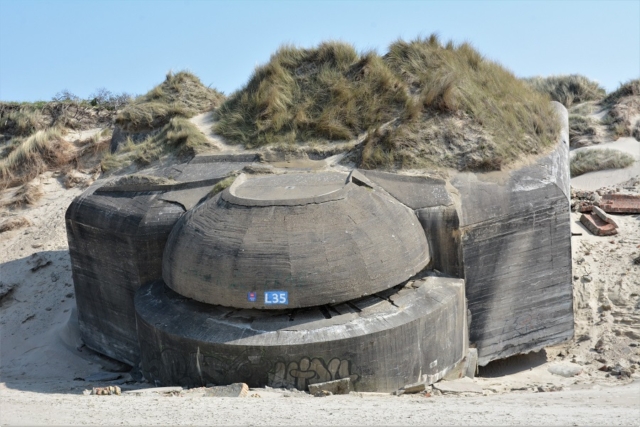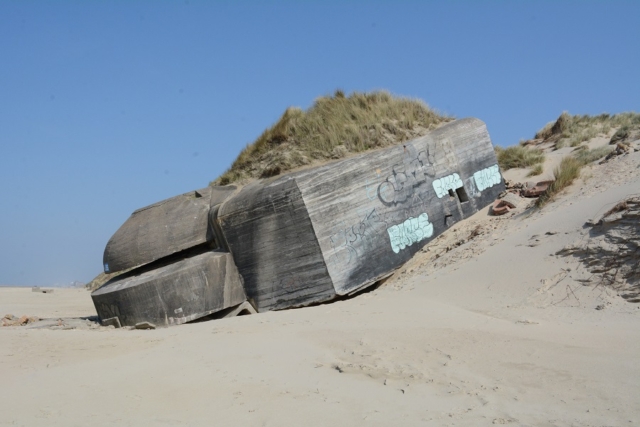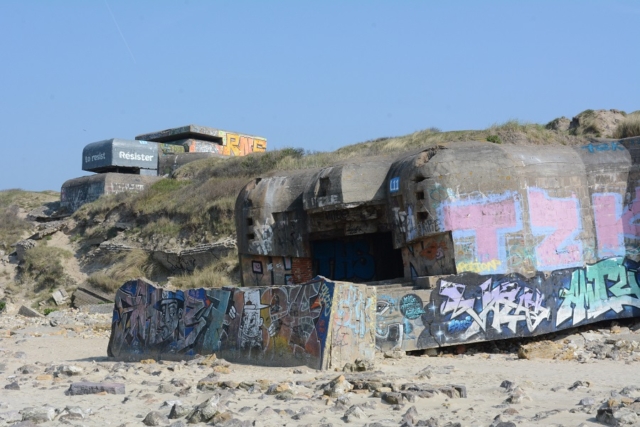Dunkirk is spelt Dunkerque in French.
Practical Information – Getting there. Getting from Dieppe to Dunkirk is not easy if you don’t have a car. There are several options. All of them are bad. First, you could take a train back to Paris and another train to Dunkirk. The problem is that you have to change trains in Paris and change train stations. This means a taxi ride across Paris which makes it inconvenient to deal with two different train stations and the extra expense of the taxi and two different train tickets.
You could go by bus or by a combination of buses and trains, but you would need to change buses and trains several times and get from the bus station to the train station.
The final option, which we used, is by train only and avoiding Paris. You have to change trains twice at Rouen and Lille for this option, but that is not difficult. The only problem with this is that there are only two trains per day; one at 6:17 a.m. and the other in the evening. So we got up at 4: a.m. to get ready and walk to the station. From Dieppe to Dunkirk is a long distance, and with a couple of extra hours for changing trains, we arrived at Dunkirk, very tired, at 2 p.m.
You can also get to Dunkirk by ferry from Dover, England.
History
History: During the first few years of the Second World War, Britain and France were simply no match for Germany. After Germany invaded Poland in September 1939, Britain declared war on Germany and started moving troops across the Channel into France. This was called the British Expeditionary Force. By May of 1940, the BEF consisted of ten divisions. Also working with the British were Belgium and France.
The French built a series of bunkers along the French/German border. They called this the Maginot Line, and they considered it impenetrable. Perhaps it was, but the Germans simply went around it through the neutral Netherlands. The French did not think that Germany would invade a neutral country. So they deployed their whole army along the Maginot Line with no reserves and no troops along the Belgian border, leaving the British to cover that area.
In their new blitzkrieg style of warfare, the German tanks overwhelmed the Belgians, and the British found themselves surrounded with their backs to the sea. Churchill ordered an evacuation.
The area around Dunkirk is marshy and not suitable for tanks. Besides, The panzer division needed time for rest and repairs after coming through Belgium and Holland. So Hitler decided to halt the tanks and let the air force finish off the trapped British on the beach at Dunkirk.
The evacuation began on 27 May 1940. The German air force started bombing both the beach and the town on the same day. The Luftwaffe attacked with 300 bombers and 550 fighter planes.
The British had one cruiser, eight destroyers and 26 other Navy ships offshore. One British destroyer was sunk and two others badly damaged but managed to get away on the first day. Two trawlers and two passenger ships were sunk with 600 soldiers aboard, but most men managed to get back to shore. The RAF tried valiantly to defend the ships and the soldiers on the beach without success. They lost 16 aircraft. The next day the Germans sank another transport ship and damaged 12 others. There were also a few ships from Canada and other countries. A total of 693 ships were involved in the rescue, of which 226 of them were sunk.
Privately-owned ships
Besides the military ships, the British public and both private and government companies helped with the rescue. They put sail with a huge fleet consisting of every kind of vessel imaginable, including speed boats, tour boats from the Thames River, car ferries, passenger ferries, fishing boats, yachts and many others. This fleet consisted of 168 ships, of which 17 were sunk, including two owned by the British Railway. Some boats were crewed by British Navy personnel but many were manned by their civilian owners. The smallest of these boats was only 18 feet in length.
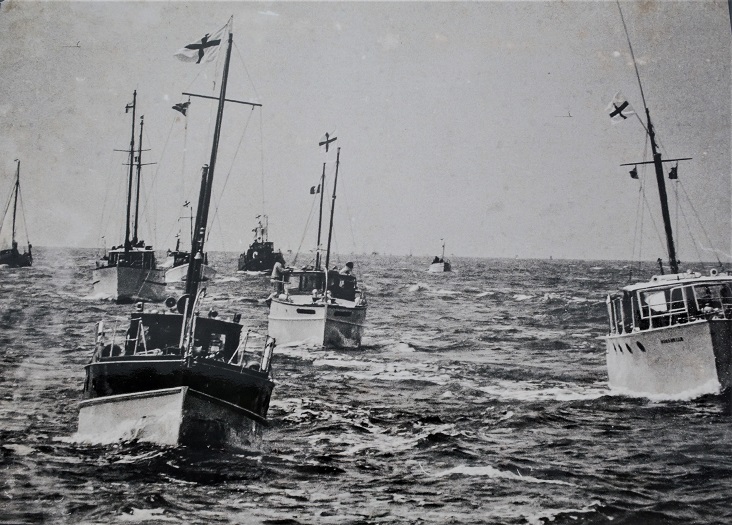
The Beach
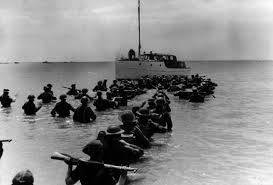
All the while, the soldiers on the beach were being bombed and strafed by German aircraft. The water off the shore of Dunkirk is very shallow, and even small ships could not get closer than 90 metres. So the soldiers had to wade out to the waiting ships. Despite the chaos and the attacking aircraft, most soldiers lined up and waited patiently for their turn to board. At one location, the soldiers drove a line of vehicles into the water and used them as a bridge to get out to a waiting ship.

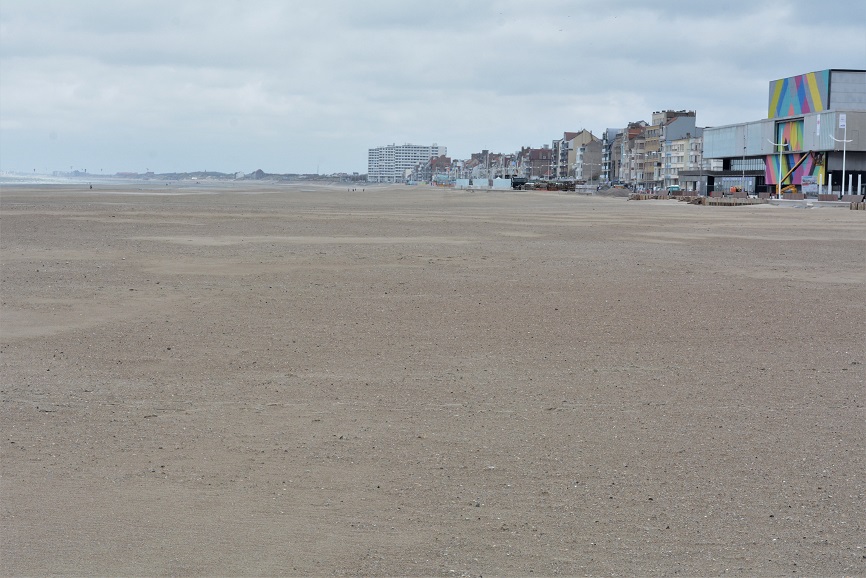
Statistics
The British Expeditionary Force consisted of about 300,000 or more soldiers. However, not all of them were at Dunkirk, as many were deployed at other places in Europe.
Not all of the soldiers at Dunkirk were on the Beach. About 40,000 of them were deployed in a semi-circle around Dunkirk to protect the thousands on the beach from a land attack. Sadly, these men had to be left behind. Also, most of the Royal Army Medical Corps personnel volunteered to stay back to care for the wounded.
The Dunkirk evacuation was both good news and bad. The good news is that 198,229 British and 139,997 French, Polish and Belgian soldiers were rescued. The bad news was that so many were killed or left behind. The British had about 68,000 casualties, including more than 1,000 killed, 27,000 wounded or missing, and more than 40,000 captured by the Germans. (of the 27,000 wounded, most of them are included with the number rescued. Not all injured were left onshore).
In addition to personnel, the British army lost almost all of its equipment. Left on the beach at Dunkirk were 2,472 artillery weapons, 20,000 motorcycles, 65,000 vehicles, 377,000 tons of supplies, 68,000 tons of ammunition and all of their 445 tanks. Later, Britain was so desperate for vehicles that they retrieved old buses from the scrapyard and fixed them up for use as troop carriers.
The civilians in the town suffered more than 1,000 killed, and German bombs destroyed 90% of the city.
Other Countries Involved
If you read the history of the Dunkirk evacuation, it will tell you about the rescue of thousands of British, French and Belgian soldiers. But there were also Canadians and soldiers of other countries on the beach at Dunkirk. So I suspect that the British Commonwealth countries, such as Canada and India, are included in the total of British troops. Also on the beach at Dunkirk were allied soldiers from Morocco and Poland.
Dunkerque Museum 1940
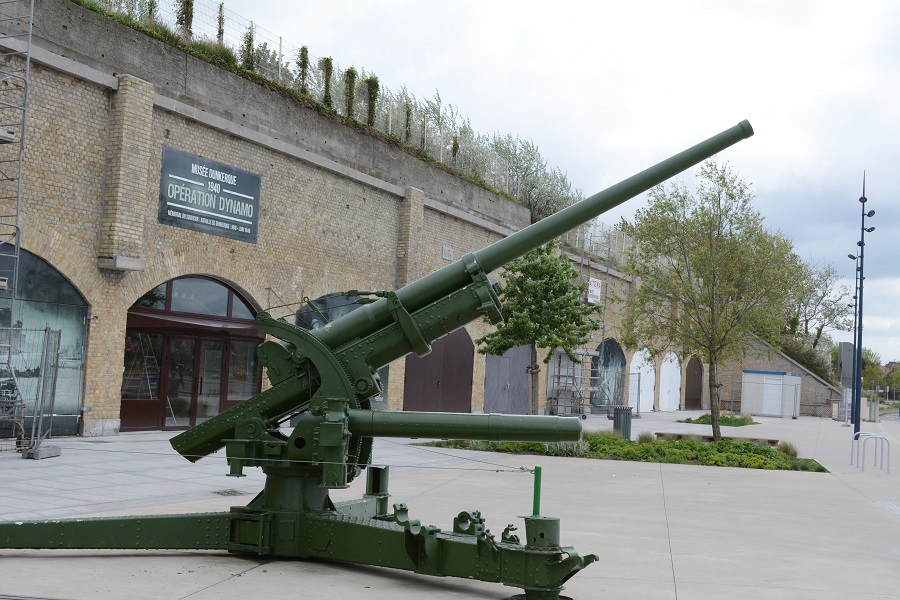
The museum is generally closed for the winter from November until April.
Memorial
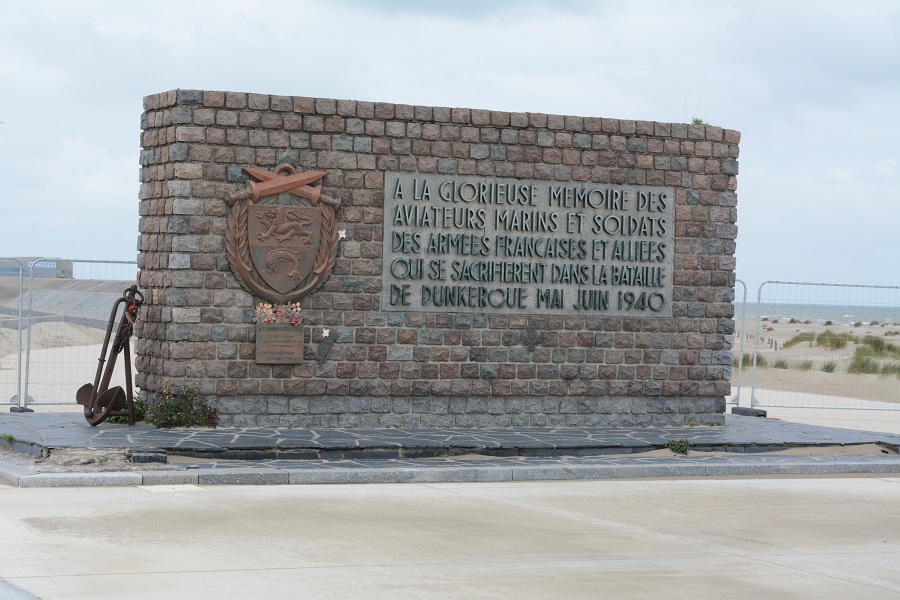
A large memorial to the Dunkirk Evacuation is located at the west end of the beach. It reads, in French, “To the glorious memory of the aviators, sailors and soldiers of the armies of France and Allies who gave their lives in the Battle of Dunkerque May & June 1940.”
Beach Walk, Shipwrecks and Bunker Wrecks
We walked all day along the beach at Dunkirk. It is a vast, beautiful, sandy beach stretching further than the eye can see – the largest beach in Europe. There are not many people on the beach at this time of year (April). It is cold. I planned it that way. I did not want to come during any special ceremony, nor did I want to be here during the summer when the beaches are so crowded that you can hardly move. Almost everyone in France takes their holidays in August, and most of them head for a beach. I enjoyed walking along the beach, thinking about what it must have been like during the evacuation. We walked all day on the beach, a distance of almost 26 km return.

Some of the ships that were sunk during the Battle of Dunkirk are still visible. You can see them only at low tide. Not much left of them now after almost 80 years.
There are a lot of German bunkers along the coast. Most had been destroyed by the British before leaving. The bunkers were designed to counter an invasion by sea, but the British and French arrived from inland. Most are now covered in graffiti. (Click the first photo to enlarge and scroll through them).
The Princess Elizabeth
Built in 1927, this ship was named after the little princess, now Queen of Great Britain. It was a paddle-wheel steamer used to ferry passengers from the mainland to the Isle of Wight in England. At the outbreak of the war, the ship was used as a minesweeper and fitted with a 105 mm gun.
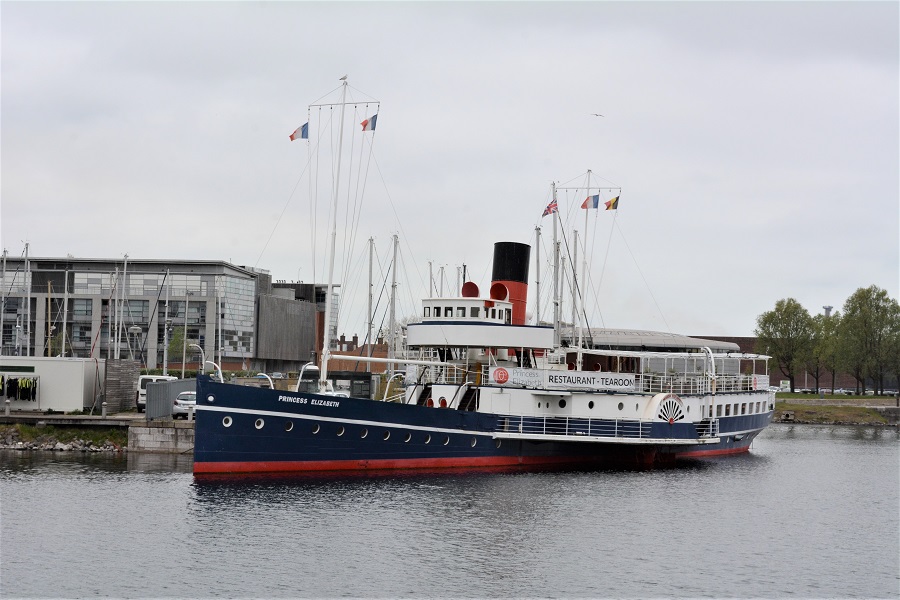
During the Dunkirk evacuation, the Princess Elizabeth made four trips from Dunkirk to England, rescuing 1,673 soldiers.
After the war, it became a tour boat, carrying passengers around the coast of southern England. It eventually ended up as a restaurant on the Thames River in London.
In 2016, the Princess Elizabeth was once again rescuing soldiers off the beach at Dunkirk in the movie “Dunkirk”. It is now a fancy, expensive restaurant in the Dunkirk marina.
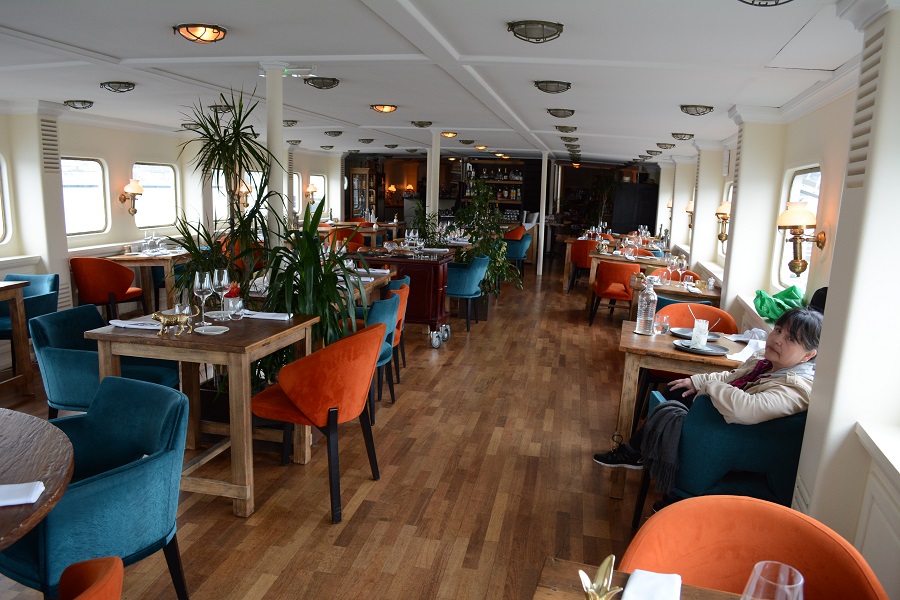
The Missing Soldiers
The story tells about the soldiers rescued, killed or taken prisoner. However, a small group of British soldiers did not fall into those categories. So what happened to them? Having failed to get aboard a ship, they refused to surrender and headed west along the coast in hopes of eventually finding another way to get across the channel to England.
They made it quite a way down the coast but eventually were discovered by the Germans and killed. They are buried in the Dieppe Canadian War Cemetery. If you go to that cemetery, you will see that about half the first row of graves are dated 1940, although the Dieppe raid did not occur until 1942.
Notes – The codename for the Dunkirk evacuation was “Operation Dynamo”. See the movie “Dunkirk” for a representation of the evacuation.
